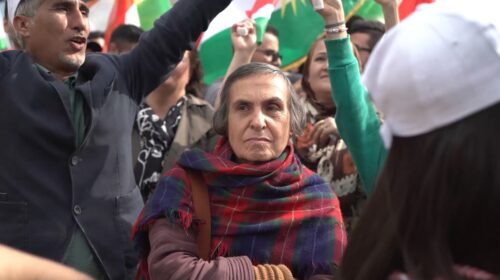“We may have heard the name Nawi Ismail, although the other name ‘Ismail’ (Usmar Ismail) is more famous,” said Eric Sasono, opening the DOC Talk session at Cemeti-Institute for Art and Society, Thursday (7/12/2023). Together with the author of Biang Kerok Kenikmatan: Nawi Ismail dalam Sinema Indonesia, Umi Lestari, FFD 2023 held a DOC Talk titled “Nawi Ismail in Indonesian Cinema”. This talk discusses the study and reading of Nawi Ismail’s films in the book.
Nawi Ismail was an Indonesian filmmaker in the early days of independence. Nawi has been involved in Indonesian cinema since the Japanese colonial period and reached the peak of his popularity when he directed Benyamin Sueb’s films. According to Umi’s notes, Nawi has made around 60 fiction films. However, what is not widely known is that he was also a filmmaker of “documentary films” which in his time were called “news films” or newsreels.
In the history of Indonesian cinema, Nawi has always been positioned as a slapstick film director. As we know, slapstick comedy has been marginalized in Indonesian cinema, unlike “serious films”. In her research, Umi found that Nawi was exposed to the idea of making “non-serious films” when he worked at Java Industrial Film, the film studio owned by The Teng Chun. On the other hand, Nawi also had experience working at Nippon Eiga Sha (NES), a Japanese propaganda film studio that produced news films. These became two of Nawi’s platforms for making his popular works in the 1970s. “If we look at it in a technical way, there are certain disciplines (in Nawi’s films),” said Umi. After being dissected, in Benyamin Biang Kerok (1972), Nawi inserted criticism of the New Order and militarism in the 1970s.

Unlike Usmar Ismail who was a member of the Japanese Cultural Center (Keimin Bunka Sidosho), his experience working at Java Industrial Film led Nawi to join NES. In NES, Nawi acted as an editor. Specifically, he worked on Nampo Hodo (1944), a Japanese propaganda documentary originally called Berita Film di Jawa. Apart from newsreels, Nawi also contributed to Berjoeang (1944), a fiction film about a young man who wants to defend Japan–a propaganda film as well. Aesthetically, Nawi, who was used to cutting film and was a student of Dr. Huyung, tended to create montages in his films. This is in contradiction to Usmar, who had a tendency to create films with long dialogues. Nawi was more familiar with visual language rather than intellectual arguments. This classic montage is also what distinguishes Nawi’s aesthetics from today’s film aesthetics.
After Indonesia’s independence, pro-Indonesian filmmakers formed Berita Film Indonesia (BFI) on October 6, 1945. BFI filmed the atmosphere in Jakarta after independence. Before that, they also filmed the graffiti of “Merdeka!” on August 17 and the events at Ikada Field in September 1945. After the NES studio was taken over by the Allies, BFI became the group in charge of documenting Soekarno’s activities. Not many names were recorded as part of BFI. Even at that time, Nawi joined the army, but it is clear that he still played a role in audiovisual documentation. One of BFI’s films at that time was Gelora. This film tells the story that Indonesia is doing perfectly fine without the Dutch.

Moving from newsreel documentaries to fiction films, Nawi tends to use slapstick humor in his films. In particular, in Benyamin Sueb’s films, he often uses body shaming as a way of throwing humor. That is the reason why there is an aesthetic distance between Nawi and today’s filmmakers. Moreover, the issue of slapstick humor and body shaming is a vulnerable matter. In addition, Nawi also brought his experience of making newsreels to the film Demam Tari (1985). In the film, Nawi filmed “spastic dancers” or now better known as breakdancing around Taman Ismail Marzuki (TIM).
The ins and outs of Nawi Ismail in the development of Indonesian cinema are endless. The experience and aesthetics he chose in making newsreels made him attached to montage and documentary. In fact, his fictional works cannot be separated from the exposure of these aesthetics. Other discussions in DOC Talk are still available and will be held offline for free. Find out more information through the Festival Film Dokumenter website.
Covered by Ahmad Radhitya Alam on December 7, 2023.



